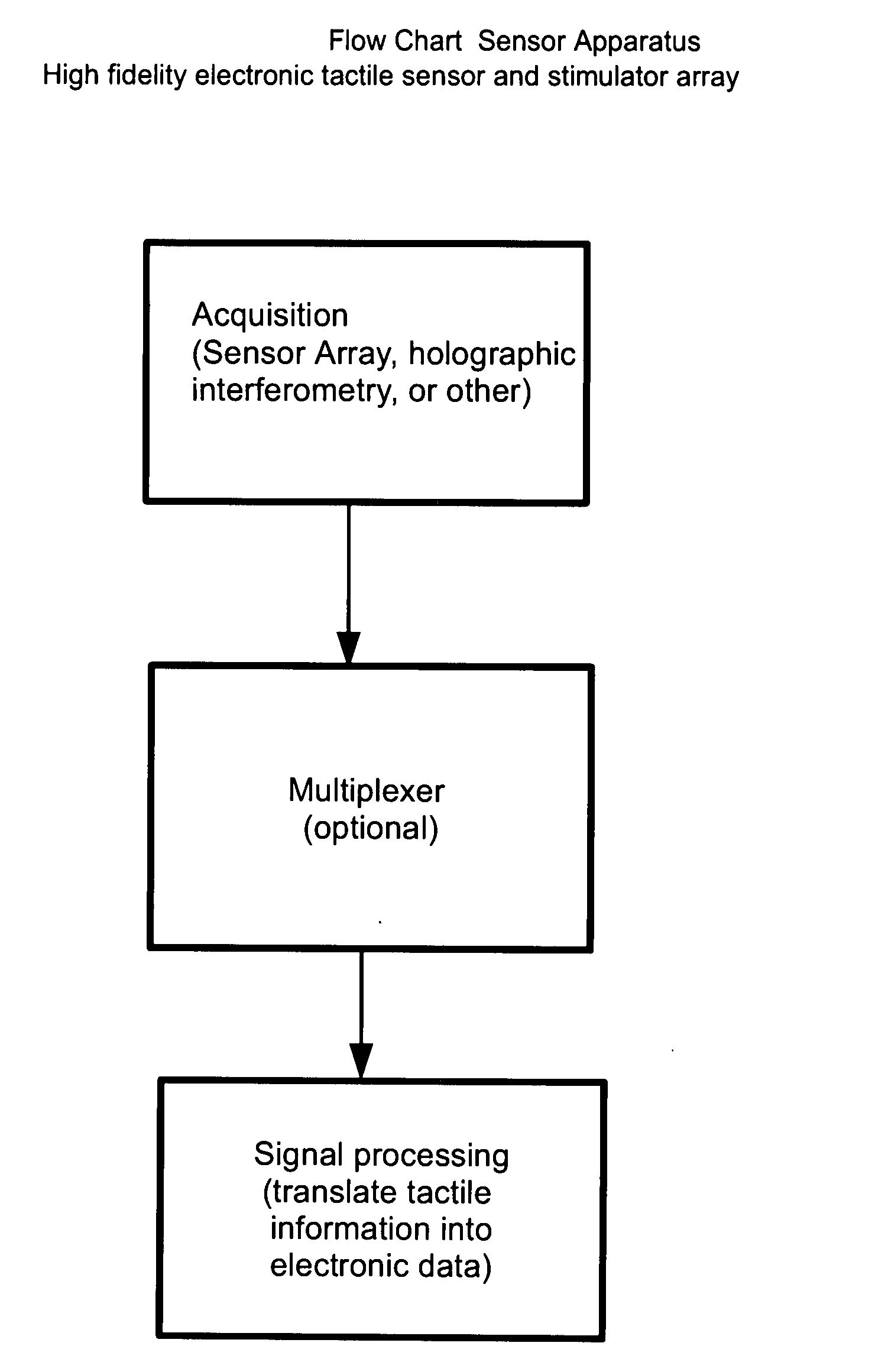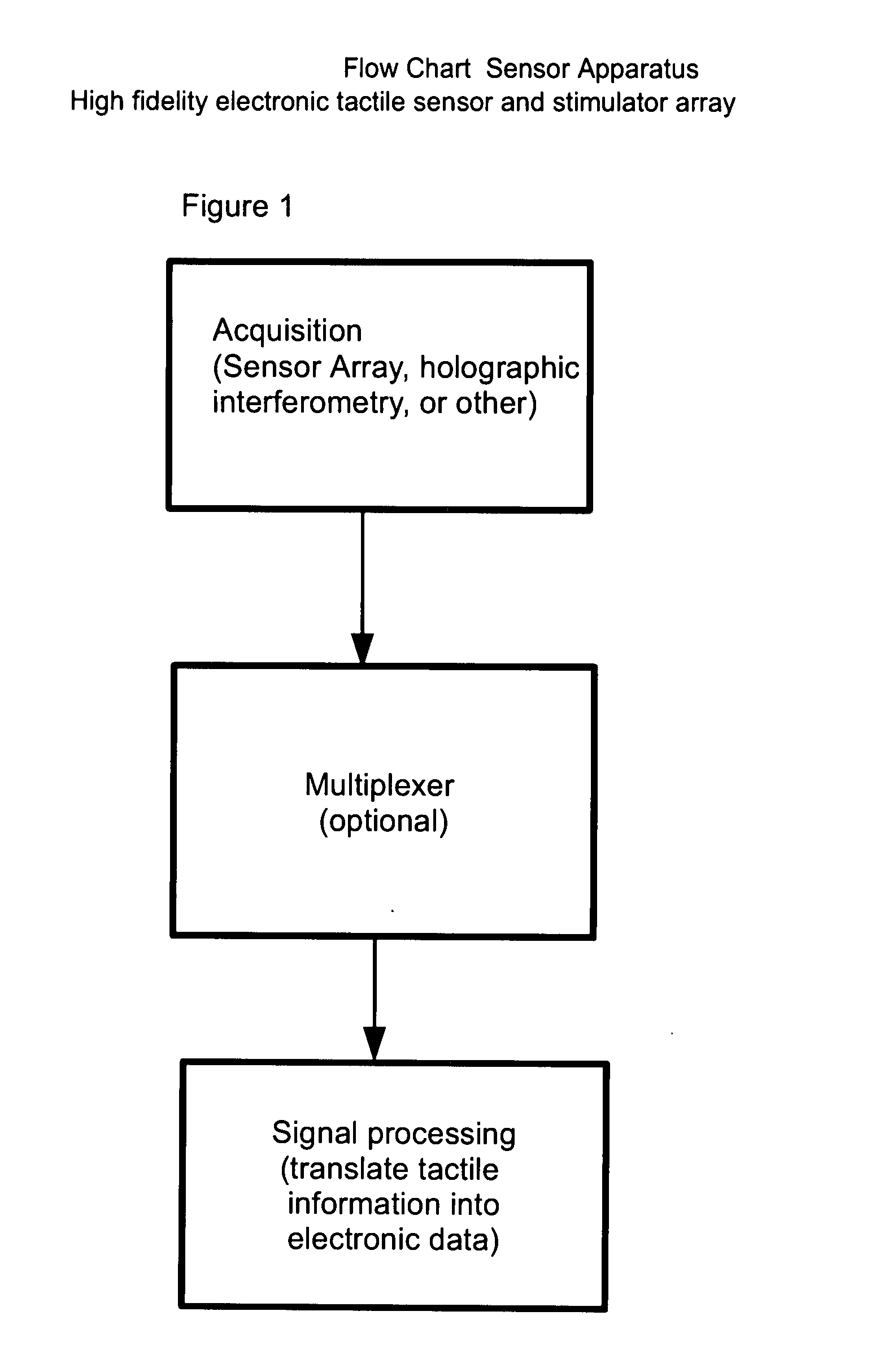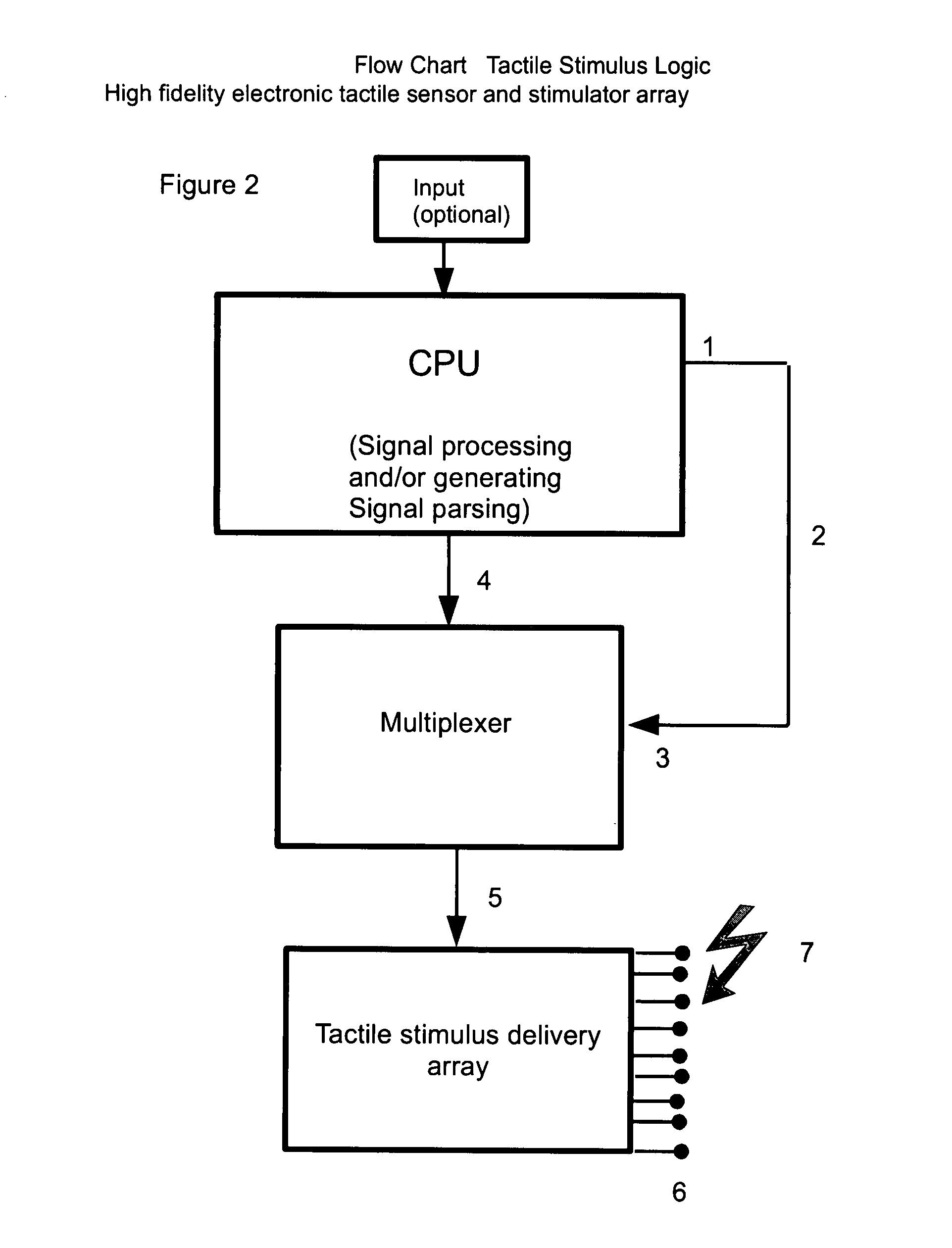High fidelity electronic tactile sensor and stimulator array, including sexual stimulus
a technology of which is applied in the field of high fidelity electronic tactile sensor and stimulator array, including sexual stimulus, can solve the problems of inability to deliver high fidelity electronic tactile stimulus, no proposal in any patent application for utilizing bipolar electrode array, and inability to construct structures to deliver sufficient information density
- Summary
- Abstract
- Description
- Claims
- Application Information
AI Technical Summary
Benefits of technology
Problems solved by technology
Method used
Image
Examples
Embodiment Construction
[0037]The first component of the Apparatus described in the Claims of this invention is the vibratory stimulus detection and analysis component. Vibration in the target is detected either by direct means, or through laser interferometry. This information is gathered either simultaneously at multiple loci, in an individualized pattern to cover areas of maximal interest, or in a standard grid raster scanning pattern analogous to the acquisition of video information.
[0038]The gathered information is processed into a matrix of surface frequency patterns for each locus. This matrix of patterns in turn is translated into a matrix of electrical signals that would be necessary to replicate the effect in the target subject. This is achieved in a manner analogous to a limited Fourier transform as follows:
[0039]As a for instance, take a matrix of 10×10 loci (no images are provided since this is a standard concept). Take locus (1,1) of this matrix and assume that 1 Hz is required to generate th...
PUM
 Login to View More
Login to View More Abstract
Description
Claims
Application Information
 Login to View More
Login to View More - R&D
- Intellectual Property
- Life Sciences
- Materials
- Tech Scout
- Unparalleled Data Quality
- Higher Quality Content
- 60% Fewer Hallucinations
Browse by: Latest US Patents, China's latest patents, Technical Efficacy Thesaurus, Application Domain, Technology Topic, Popular Technical Reports.
© 2025 PatSnap. All rights reserved.Legal|Privacy policy|Modern Slavery Act Transparency Statement|Sitemap|About US| Contact US: help@patsnap.com



